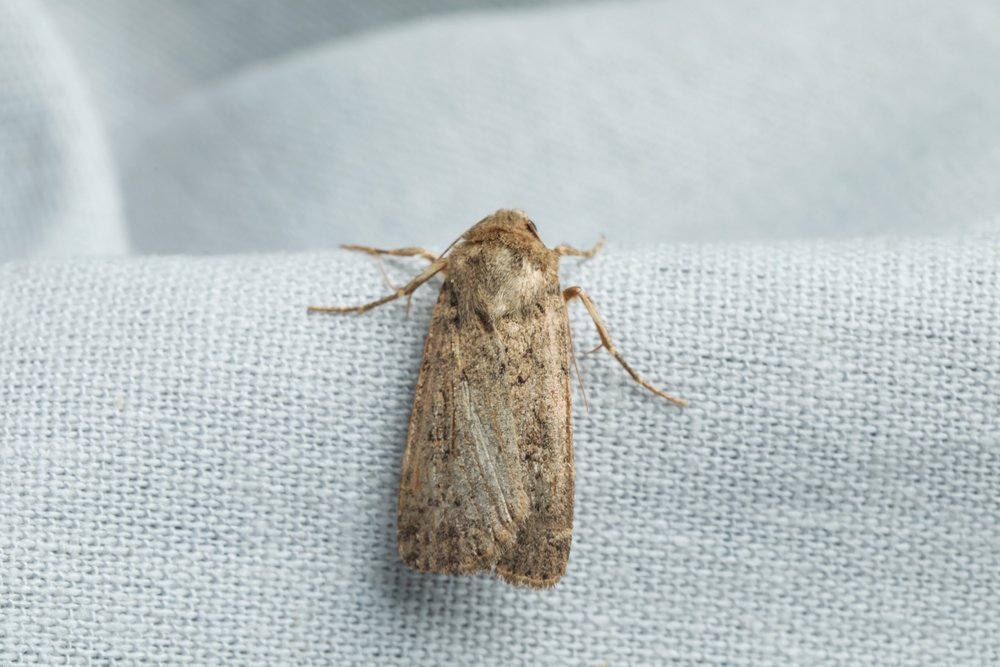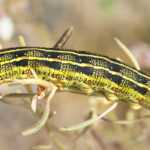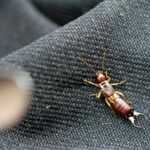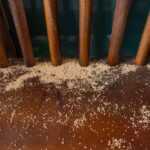Are Moths Dangerous? Key Facts You Should Know
Wondering if moths are dangerous? Learn the truth about moth risks, health concerns, and how they affect your home in simple terms.
Are Moths Dangerous? Health Risks and Prevention Tips
Are moths dangerous? Many people worry about the potential health risks these insects might pose. Generally, moths are not harmful to humans. They don’t bite or spread disease. However, certain moth species can trigger allergic reactions and contaminate food. This article will explore the main concerns and provide tips on preventing moth-related issues.
- Most moths do not pose a health risk to humans, but they can trigger allergic reactions, especially in individuals with sensitive allergies.
- A few species, such as vampire moths, can bite, but such incidents are rare and typically not dangerous.
- Preventing moth infestations involves cleanliness, proper food storage, and using natural deterrents like essential oils.
Are moths dangerous to humans?
When it comes to moths, many people wonder if these seemingly harmless insects pose any real danger to humans. The majority of moths that we commonly encounter in our homes, such as clothes moths and pantry moths, are not dangerous to humans. They do not bite or cause direct harm, which might come as a relief to those who find these tiny flying insects in their closets or kitchens.
However, moths can trigger allergic responses in some individuals. This is primarily due to the proteins found in their scales and waste products. When these scales become airborne and are inhaled, they can cause respiratory issues, particularly in people with pre-existing conditions. The allergic reactions can mimic symptoms of other indoor allergies, such as dust mites or pet dander, making it difficult to pinpoint the exact cause.
Being aware of these potential reactions is crucial, especially if you or someone in your household has allergies. Most moths do not pose a significant health risk, but knowing the possible issues they can cause helps in taking appropriate measures to prevent any problems.
Do moths bite humans?
One of the common concerns people have is whether moths bite humans. The good news is that most adult moths do not bite humans. Biting incidents are quite rare and usually occur when certain moth species feel threatened. For instance, some owlet moths possess mandibles that can bite if they are agitated, but this is not a common behavior.
There are, however, certain moth species, such as those from the Calyptra genus, known as vampire moths, which can bite humans. These bites can cause transient pain and swelling but are generally not dangerous.
Additionally, some caterpillars can bite or sting, causing skin irritation. While the thought of moth caterpillar and moth bites might be unsettling, it’s reassuring to know that these incidents are rare and typically not harmful.
Are moths poisonous?
When it comes to toxicity, most moth species are not poisonous. For the average person, the risk of experiencing harmful effects from a moth is minimal. Ingesting a moth is usually necessary to experience any potential harm, and even then, the effects are typically mild. Certain caterpillars may sting, and some adult moths can be mildly toxic if ingested, especially those that feed on poisonous plants during their larval stage.
Despite these exceptions, it’s important to note that no known moth species pose a significant threat to human life. The overall health risks from moths are minimal, and most encounters with them are harmless. This means that while you might want to avoid eating moths or touching certain caterpillars, there’s no need to be overly concerned about their toxicity.
Understanding that moths are generally not dangerous can help alleviate fears and misconceptions. While some species might have mild venom or cause skin irritation, they do not represent a serious health risk. This knowledge can help you coexist with these insects more comfortably.
Dangerous moth species
While most moths are harmless, there are a few species that can be considered dangerous due to their unique behaviors. Species like the vampire moths, which can feed on the blood of vertebrates, and certain poisonous moth caterpillars stand out.
Examining these specific examples can help understand their potential risks better.
Vampire moths
Vampire moths are one of the more notorious moth species, known for their ability to pierce human skin with their proboscis and suck blood. These moths are usually located in their native regions. This includes areas in Asia, Africa, and parts of Europe. The males of this species are the ones that engage in blood-feeding, while the females primarily consume fruit juices and nectar.
Their feeding mechanism is quite fascinating, as they can feed for as long as 50 minutes on a single blood meal. Despite their intimidating behavior, vampire moths are not considered a significant threat to human health. Their bites might cause transient pain and swelling but are generally not dangerous.
Luna moths
In contrast to the vampire moths, luna moths are completely harmless to humans. They are primarily admired for their impressive appearance rather than feared. With their beautiful green wings and large wingspan, luna moths are a sight to behold.
Luna moths lack any stingers or venomous properties, making them safe to encounter. They are often appreciated for their aesthetic value, and many people enjoy spotting them during the summer months. Understanding the harmless nature of luna moths can help you appreciate their beauty without any fear.
Moth larvae and health risks
Moth larvae, unlike adult moths, can pose certain health risks. Contact with their spines or hairs can cause skin irritation. This irritation might not be severe for most people, but it can lead to reactions similar to those experienced by individuals with pre-existing allergies. Larval moths can also contribute to these health concerns.
When moth larvae come into contact with your skin, their spiny hairs can induce allergy-like reactions such as stinging or itching. These reactions are usually mild and temporary, but it’s important to be cautious, especially if you have sensitive skin or allergies.
Can moths cause allergic reactions?
Yes, moths can cause allergic reactions, particularly through contact with their scales and droppings. Some caterpillars and moths possess hairs or spines that can cause skin irritation or allergic reactions upon contact. These reactions are often mild but can include symptoms such as itchiness, redness, and swelling.
Skin contact with moth scales or droppings may result in rashes and irritation. For individuals with pre-existing conditions, the risk of experiencing these allergic reactions is higher. The proteins in moth scales and waste can become airborne, leading to respiratory issues if inhaled.
Being aware of these potential allergic reactions is crucial, especially if you or someone in your household suffers from allergies. Taking preventive measures, such as maintaining cleanliness and avoiding direct contact with moths and their larvae, can help minimize the risk.
Moths and food contamination
Pantry moths, particularly Indian meal moth and Mediterranean flour moths, can cause significant food contamination by laying eggs in grains and similar products. The larvae of these moths consume various food items, including cereals, dried fruits, and pet food, leading to substantial damage in food storage areas.
Female Mediterranean pantry moths can lay a considerable number of eggs, which can lead to rapid infestations in food supplies. The larvae spin silken webs and leave behind tangled messes in contaminated food, often indicating an infestation.
Using natural repellents like bay leaves can be effective for keeping moths away from food storage areas.
Preventing moth infestations
Preventing moth infestations is crucial to avoid the problems they can cause. Maintaining cleanliness in storage areas and keeping clothes and fabrics clean can help deter moths. Using airtight containers for food storage is another effective measure to prevent pantry moth infestations.
Exploring more detailed strategies can help keep moths at bay.
How to deter moths
Using natural deterrents is an effective way to repel moths and keep them from entering your home. Lavender and cedar essential oils are known natural ingredients that can repel moths. Consider using these essential oils in diffusers or as sprays in areas where moths may enter your home.
These methods are not only effective but also safe for your home environment. Incorporating these natural deterrents into your routine can help you maintain a moth-free home without relying on harsh chemicals.
Moth control strategies
Significant damage can occur before a moth infestation is identified. A clear indication of a clothes moth infestation is visible damage to clothes, curtains, or carpets. Vacuuming regularly helps eliminate potential moth eggs and larvae from hidden areas.
Thorough cleaning is often insufficient to eliminate moths as it won’t remove all eggs, larvae, pupae, and adults. Effective methods for killing moths include moth traps, flypaper, and fish oil. Pest control services can provide expert advice on preventing recurring infestations.
Professional Pest Control Services
When dealing with severe moth infestations, professional pest control services can be invaluable. Whether you need residential or commercial pest control, this kind of expertise and dedication is a reliable choice for keeping your space pest-free.
While most moths are harmless to humans, certain species and their larvae can pose health risks. Understanding these risks and taking preventive measures can help you maintain a safe and comfortable living environment. From causing allergic reactions to contaminating food supplies, moths can indeed be more than just a nuisance.
If you find yourself dealing with a moth infestation, professional help is just a call away. Don’t let moths take over your home – take action today and ensure a pest-free environment for your family.
Frequently Asked Questions
Are moths poisonous?
Moths are generally not poisonous to humans, with most species posing a threat only if ingested. However, certain caterpillars can cause irritation or allergic reactions, so caution is advised if you’re allergic.
Should I ignore moths?
You should not ignore moths, especially if you have an infestation, as acting quickly can minimize damage. It’s essential to clean and dispose of heavily infested items to address the problem effectively.
Is it bad if a moth touches you?
Touching a moth is generally not harmful, as most moths don’t irritate the skin. However, if you have allergies, some moths may trigger a reaction due to tiny hairs they shed.
Are house moths harmful?
House moths are mostly harmless and do not bite humans. However, their larvae can cause allergic reactions in some individuals.
Is it dangerous to sleep with a moth in your room?
It is not dangerous to sleep with a moth in your room, as they cannot sting or bite. However, it’s wise to catch and remove them for a more comfortable sleep environment.



